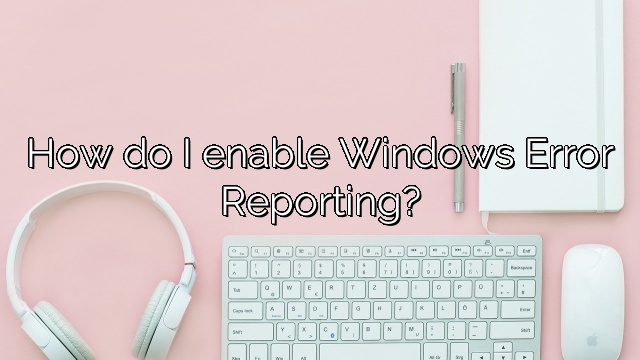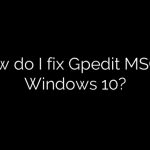
How do I enable Windows Error Reporting?
Open the Run dialog box by pressing the Windows key and the R key together.
Type GPEDIT.
Go to Computer Configuration > Administrative Templates > Windows Components > Windows Error Reporting.
On the right side, double click on Disable Windows Error Reporting and select Enable.
How do I enable Windows Error Reporting?
Press the Windows + R key combination, type Regedt32 put.exe in the Run dialog box, and press Big Hit to open the Registry Editor.
Go here: HKEY_LOCAL_MACHINE\SOFTWARE\Microsoft\Windows\Windows Error Reporting\LocalDumps.
How do I check for errors in Windows 10?
Press the Windows key.
Enter “command line”.
Right click, I would say “Command Prompt – Results Application”.
Click Run as administrator.
Type “DISM.exe /Online/Cleanup-image/Restorehealth” then press Enter.
Type /scannow””sfc and optionally press Enter.
How do I check for Windows problem reporting?
To create, click on the Cortana search box using the taskbar button (or WIN + S) and type “problem reports”. At this point, select the Show all problem reports entry to open it.
Be sure to review all issue reports now.
Does Windows Error Reporting do anything?
The Error Reporting feature allows users to notify Microsoft of application errors, kernel errors, unresponsive applications, and other application-related issues. Microsoft can certainly use the bug reporting feature to provide customers with information, troubleshooting assistance, or updates related to their particular problem.
How do I turn off error reporting in Windows 10?
Go to Group to Policy on your personal computer.
In the Local Group Policy Editor, go to Computer Configuration > Administrative Templates > Components Window > Windows Error Reporting.
On the right side of the interface, click and double-click the search option to turn off Windows Error Reporting under Settings.
How do I fix critical error in Windows 10?
Reboot your computer in safe mode or use a clean boot.
Fixed a crash when trying to use the EaseUS Partition Manager Tool file system.
Update the hard drive driver.
Start your antivirus.

Charles Howell is a freelance writer and editor. He has been writing about consumer electronics, how-to guides, and the latest news in the tech world for over 10 years. His work has been featured on a variety of websites, including techcrunch.com, where he is a contributor. When he’s not writing or spending time with his family, he enjoys playing tennis and exploring new restaurants in the area.










